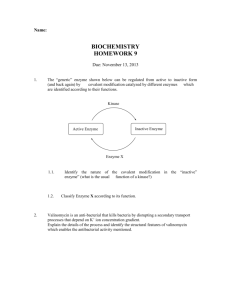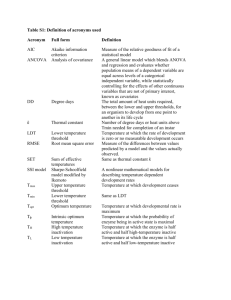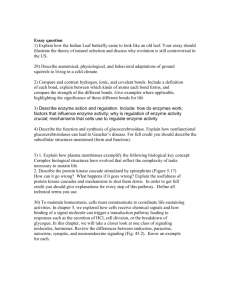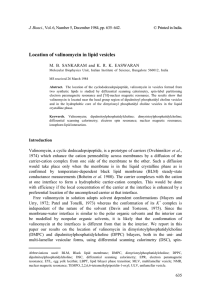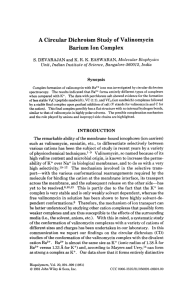HW-8
advertisement
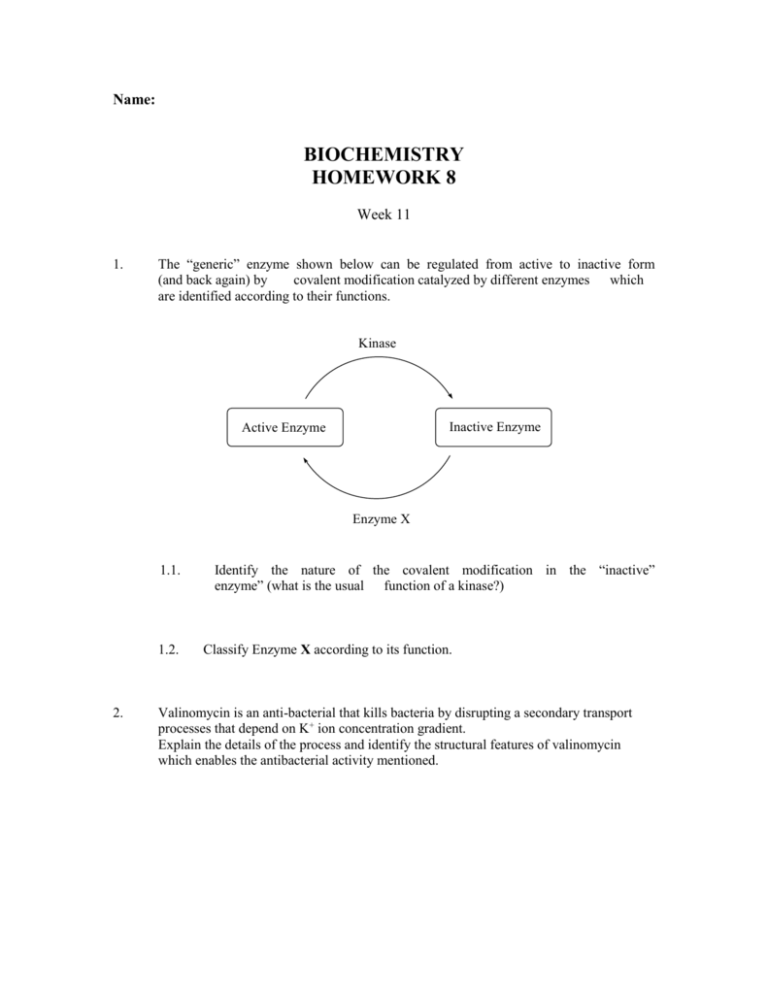
Name: BIOCHEMISTRY HOMEWORK 8 Week 11 1. The “generic” enzyme shown below can be regulated from active to inactive form (and back again) by covalent modification catalyzed by different enzymes which are identified according to their functions. Kinase Inactive Enzyme Active Enzyme Enzyme X 1.1. 1.2. 2. Identify the nature of the covalent modification in the “inactive” enzyme” (what is the usual function of a kinase?) Classify Enzyme X according to its function. Valinomycin is an anti-bacterial that kills bacteria by disrupting a secondary transport processes that depend on K+ ion concentration gradient. Explain the details of the process and identify the structural features of valinomycin which enables the antibacterial activity mentioned. 3. Glucose enters some cells by simple diffusion through channels and pores, but glucose enters red blood cells by passive transport. On the plot below, indicate which line represents diffusion through a channel or pore, and which line represents passive transport. Explain why the rates of the two processes (and the shapes of the two plots) are different. 4. The Na+, K+-ATPase exchanges 3 Na+ for 2 K+ ions across the membrane in different directions. Since it generates concentration gradient of these ions, it requires input of energy. Which of the following features correctly describes Na+, K+-ATPase? (1) passive uniporter (4) active uniporter 5. (2) passive symporter (5) active symporter (3) passive antiporter (6) active antiporter Complete the following reactions by showing the full structures of the missing products Please do not use abbreviations. 5.1. 5.2. 6. Which of the following is (are) considered “energy rich”? 7. Show how serine phosphatidate can be hydrolyzed in four different ways. Give the product(s) of each hydrolysis 8. Thermotoga maritima is a rod-shaped eubacterium that lives in high-temperature (> 80oC) thermal vents on the ocean floor around Lo’ihi (a seamount 22 miles off the South East coast of the Big Island). Eurycea longicauda is a salamander-shaped eukaryote that lives among the mess in my garage in Palolo under conditions that are, by comparison, rather boring and mild. What differences would you expect to find in the membrane structures of the two organisms?
